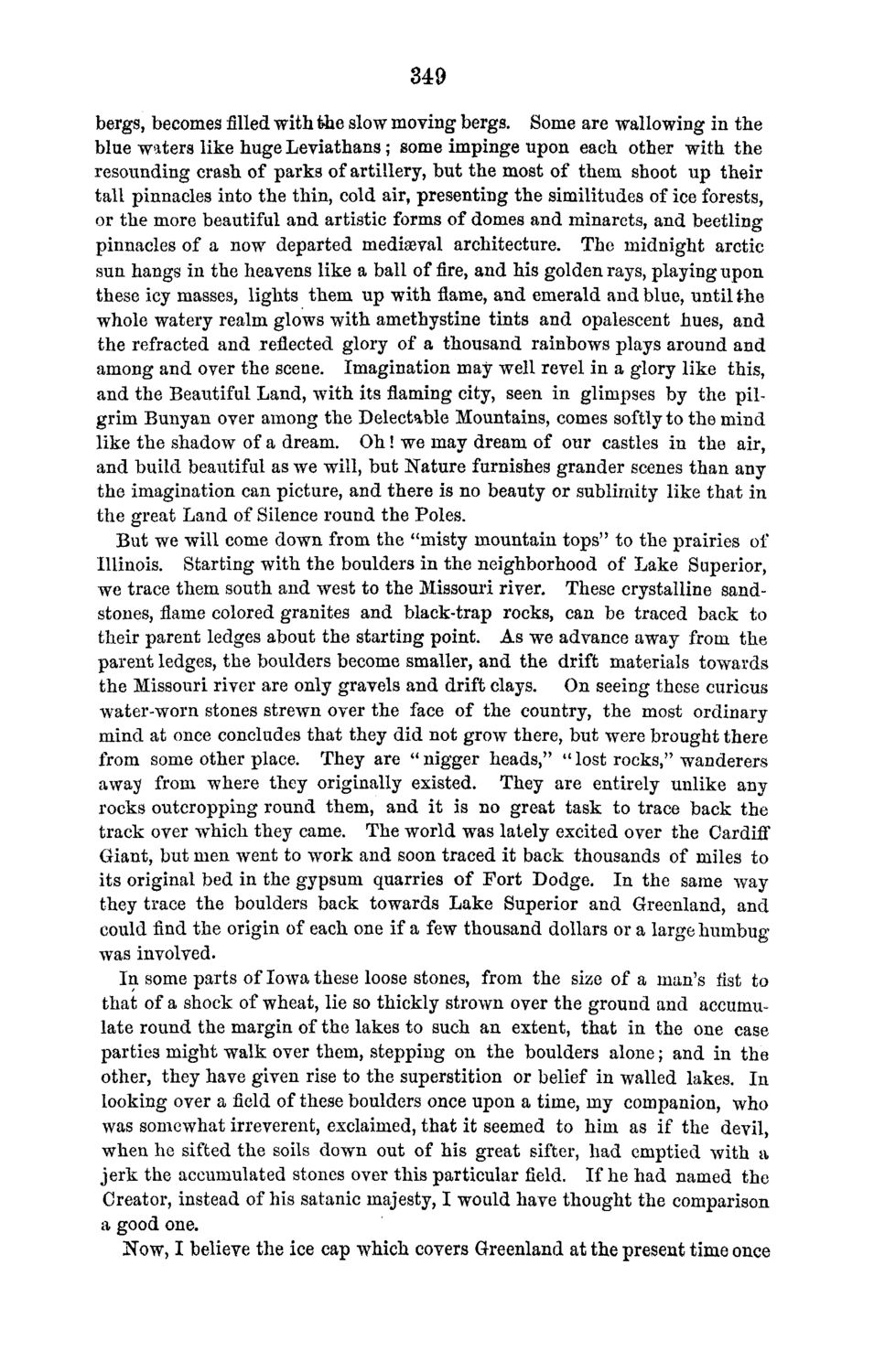| |
| |
Caption: Board of Trustees Minutes - 1870
This is a reduced-resolution page image for fast online browsing.

EXTRACTED TEXT FROM PAGE:
349 bergs, becomes filled with the slow moving bergs. Some are wallowing in the blue waters like huge Leviathans; some impinge upon each other with the resounding crash of parks of artillery, but the most of them shoot up their tall pinnacles into the thin, cold air, presenting the similitudes of ice forests, or the more beautiful and artistic forms of domes and minarets, and beetling pinnacles of a now departed mediaeval architecture. The midnight arctic sun hangs in the heavens like a ball of fire, and his golden rays, playiug upon these icy masses, lights them up with flame, and emerald and blue, until the whole watery realm glows with amethystine tints and opalescent hues, and the refracted and reflected glory of a thousand rainbows plays around and among and over the scene. Imagination may well revel in a glory like this, and the Beautiful Land, with its flaming city, seen in glimpses by the pilgrim Bunyan over among the Delectable Mountains, comes softly to the mind like the shadow of a dream. Oh! we may dream of our castles in the air, and build beautiful as we will, but Nature furnishes grander scenes than any the imagination can picture, and there is no beauty or sublimity like that in the great Land of Silence round the Poles. But we will come down from the "misty mountain tops" to the prairies of Illinois. Starting with the boulders in the neighborhood of Lake Superior, we trace them south and west to the Missouri river. These crystalline sandstones, flame colored granites and black-trap rocks, can be traced back to their parent ledges about the starting point. As we advance away from the parent ledges, the boulders become smaller, and the drift materials towards the Missouri river are only gravels and drift clays. On seeing these curious water-worn stones strewn over the face of the country, the most ordinary mind at once concludes that they did not grow there, but were brought there from some other place. They are " nigger heads," " lost rocks," wanderers away from where they originally existed. They are entirely unlike any rocks outcropping round them, and it is no great task to trace back the track over which they came. The world was lately excited over the Cardiff Giant, but men went to work and soon traced it back thousands of miles to its original bed in the gypsum quarries of Fort Dodge. In the same way they trace the boulders back towards Lake Superior and Greenland, and could find the origin of each one if a few thousand dollars or a large humbug was involved. In some parts of Iowa these loose stones, from the size of a man's fist to that of a shock of wheat, lie so thickly strown over the ground and accumulate round the margin of the lakes to such an extent, that in the one case parties might walk over them, stepping on the boulders alone; and in the other, they have given rise to the superstition or belief in walled lakes. In looking over a field of these boulders once upon a time, my companion, who was somewhat irreverent, exclaimed, that it seemed to him as if the devil, when he sifted the soils down out of his great sifter, had emptied with a jerk the accumulated stones over this particular field. If he had named the Creator, instead of his satanic majesty, I would have thought the comparison a good one. How, I believe the ice cap which covers Greenland at the present time once
| |